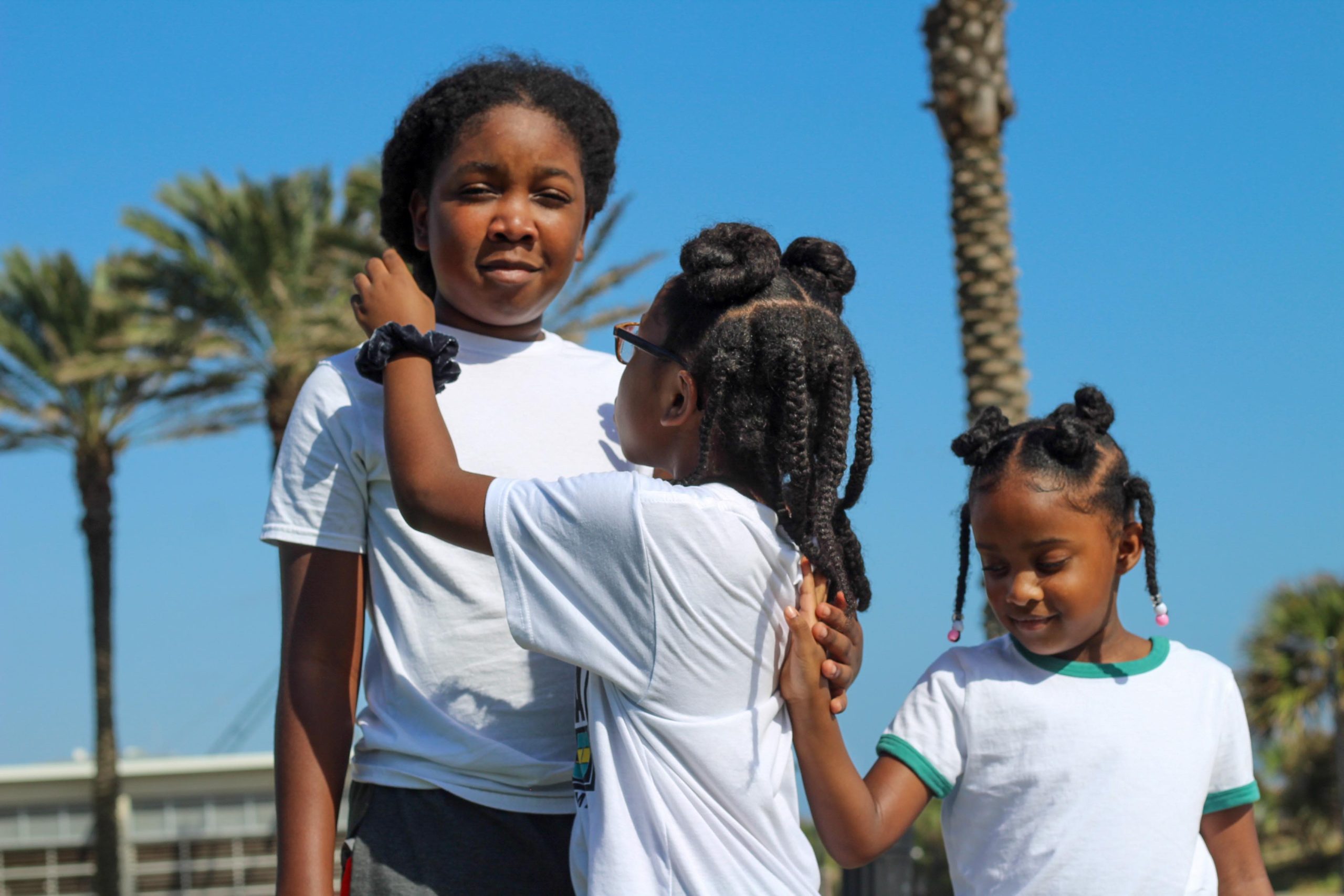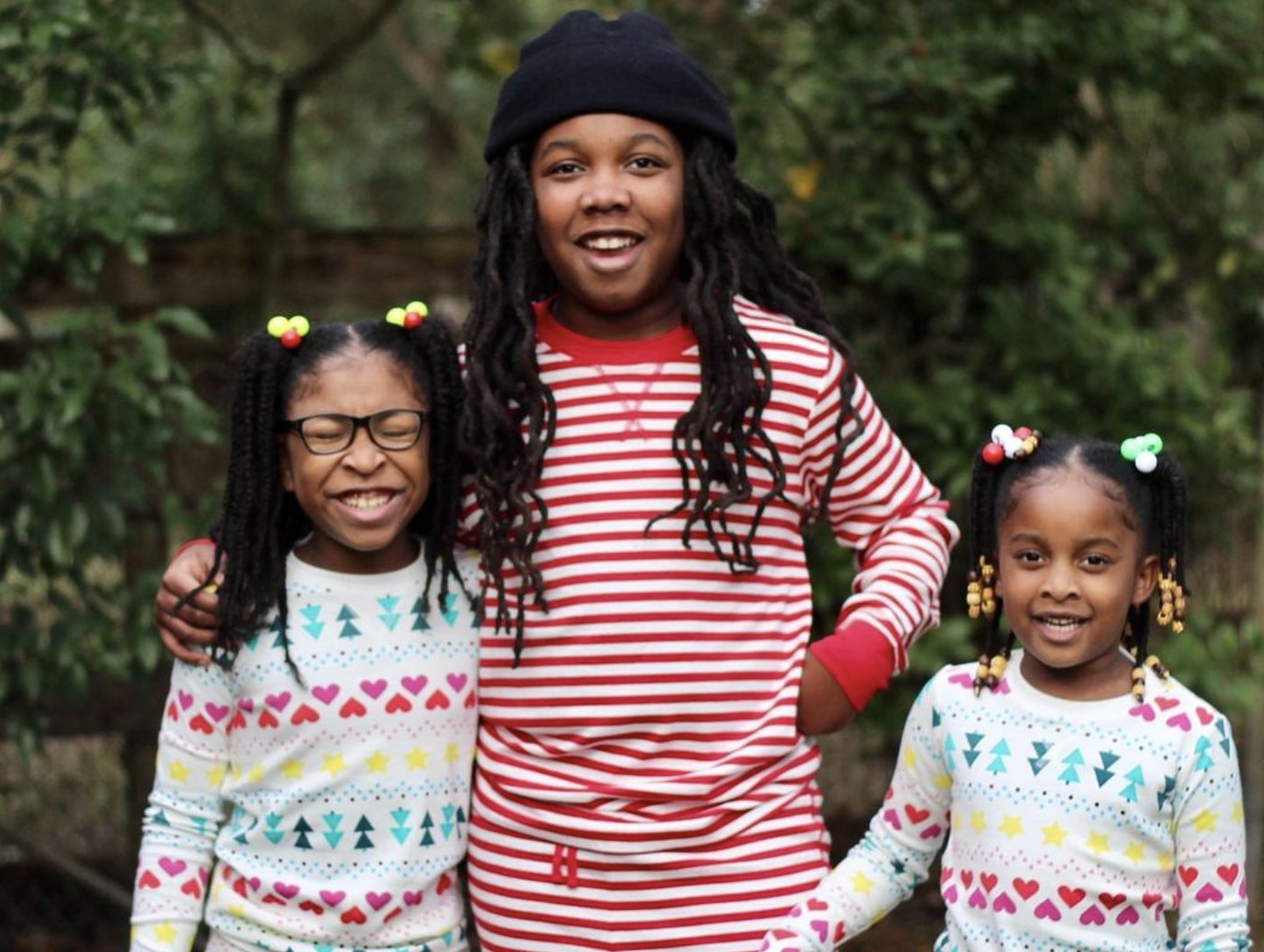
Hi, my name is Sharnique, and I am a mother to a son who is autistic. I’m also a mother to two daughters who aren’t. From day one, my son has been taught how to be in a world that was built for neurotypical people. When we began having more children, and they were not autistic, we thought it was only right that they put in an equal amount of effort to understand, accept, and include him and his needs. I was recently asked the question, “What is a good age to start talking with your child about autism?” I personally don’t think there is a specific age, so to answer the question — the sooner the better. The “conversation” about autism was never this one big sitdown talk about autism spectrum disorder (ASD). It was more so a bunch of small talks that happened over time and is forever changing and growing as our journey grows and changes. When teaching our neurotypical children about autism, we always go the open and honest route. There are three things we have found that works for our family, and I’m sure will work for anyone looking for advice on how to teach their children about their autistic peers.
- Explain what autism is and give examples they can understand.
- Use literature.
- Create a safe space for your child to ask questions and express their thoughts and feelings.
First, start by teaching them what autism is. Explaining autism will help your neurotypical child have a better understanding. While this may seem like an easy enough task, explaining a neurological disorder to a child isn’t the easiest thing to do. Keep it simple. I explain it to my girls like this: “Your brother has a brain that works differently, and because of this, he sees the world differently, and he may even act differently at times, but that’s okay.” Follow the explanation with examples. Here are some we use: “When your brother is overwhelmed or excited, he taps his fingers together quickly, or he might not look you in your eyes when you’re talking to him, but he hears you and he sees you.” We even give examples that aren’t brother-related. We tell them some autistic people don’t talk at all, but they may make different sounds and that they did the same thing before they were able to use their words. We are all different which means all of our brains work differently, but giving them examples of what those differences are and what those differences may look like helps them better understand.

Secondly, use literature. No, you don’t have to do all the work. Sometimes as parents, we don’t have the answers, or we don’t quite know how to explain something to our children in ways they will understand. I’m a firm believer that children learn best through play and books. When you are building your child’s library as a baby and lining their shelves with all sorts of diverse characters, which I hope we are all doing in 2021, be sure to add characters of different abilities as well. There are tons of children’s books about autism. Use them to help you explain. One of my daughter’s first books was My Brother Charlie by Holly Robinson Peete. It’s written from the narrative of a little girl who has a brother with autism — kind of perfect, right? So from the very beginning, the word autism was introduced into her life. Other books we like:
- My Brother Charlie by Holly Robinson Peete (Amazon)
- The Girl Who Thought in Pictures: The Story of Dr. Temple Grandin by Julia Finley Mosca (Amazon)
- Uniquely Wired: A Story About Autism and Its Gifts by Julia Cook (Amazon)
- We’re Amazing 1, 2, 3! A Story About Friendship and Autism (Sesame Street) (Amazon)
- Autism Is…? By Ymkje Wideman-van der Laan (Amazon)
- All My Stripes: A Story for Children with Autism by Shaina Rudolph and Danielle Royer (Amazon)
- Come Meet Drayden by Dana Young-Askew (Amazon)
Lastly, give your neurotypical child a safe space to express themselves. Encourage them to ask questions. This will further help them become more open and accepting. Being curious doesn’t equal being rude or mean. By answering their questions straight up, you can set the tone, lead by example, and help them become accepting of their peers with autism.
Here are a few reminders when teaching children about ASD. I’ve noticed over the years that when people are trying to explain autism to children, or anyone for that matter, they tend to talk about all the things that an autistic person can’t do, but it’s extremely important to talk about their strengths as well. This helps children have a more positive view of autism. While pointing out all the ways an autistic person is different, be sure to share how they are alike. It’s also very important to let your neurotypical child know that everyone is wonderfully and uniquely different, and this also applies to children with autism. No two children on the spectrum are exactly alike.
Whether it’s a neighbor, a sibling, or a classmate, neurotypical children and children with autism exist in this world together. As parents and adults, let’s do our part to help everyone live in a more inclusive and accepting environment.

















Wow! This couldn’t have been written any better! Thank you! I’ve been teaching pre-k AU for the past 3.5 yrs. I taught high school for a year before that. Autism. I also work a part-time job at the Autism Society of NC. My son started middle school this year, but has been around my AU friends for the past 3 years at my elementary school. After 4.5 years, tonight, while I was sitting on the porch, he came out and said, “I want to learn about Autism.” !!! I was like, “Outstanding!” I followed with, “ok! but it’s an ongoing learning journey! NO 2 individuals on the spectrum are alike.” That’s what I’ve experienced thus far.
Anyway, thank you for this! I hope everyone that sees this will take the time to chat about it with their child, loved ones, coworkers, etc. It’s super beneficial knowledge.